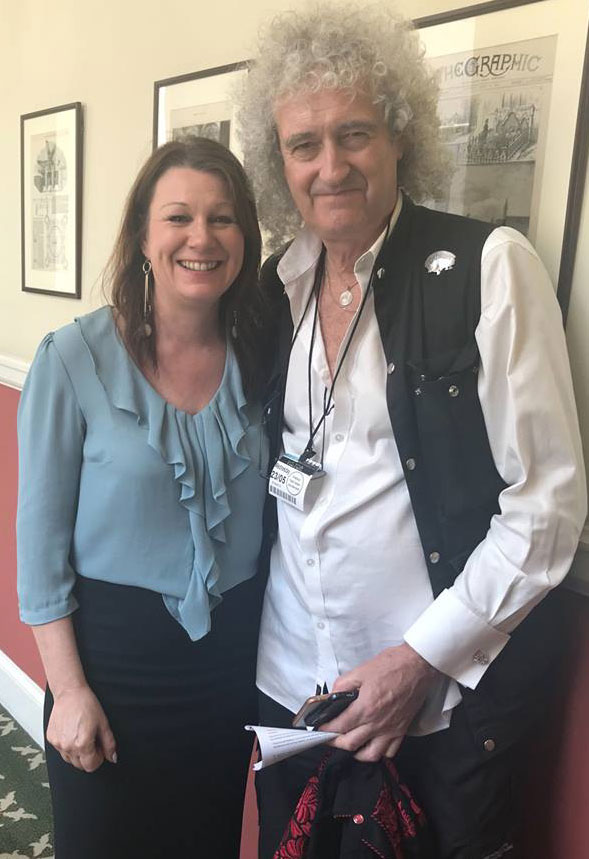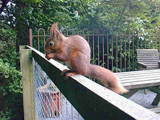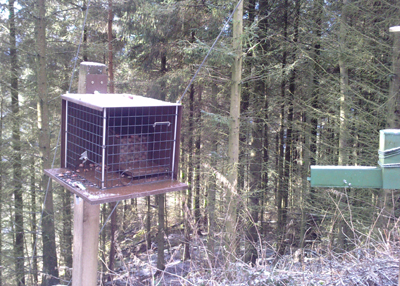Badgers in Lakeland
Badgers are shy elusive animals that are common, but rarely seen,
in the Lake District. There have been claims that badgers may
increase the risk of the spread of TB in cattle.
Yet the research body the Animal and Plant Health Agency (ALPHA)
told farmers in the summer of 2017 that the strain of the TB disease
found in a Cumbrian hotspot came from Northern Ireland. So does
this mean the badgers have been swimming across the Irish Sea
to bring TB to Cumbria! 
Labour in 2018 has pledged to end the badger cull, and Workington
MP Sue Hayman said she was delighted to be working with campaigner
(and Queen guitarist!) Brian May (Pictured right) to develop a
new approach to tackling bovine tuberculosis. "In my role
as Shadow Secretary of State for Environment, Food and Rural Affairs,
I am trying to bring together farmers' organisations, animal welfare
groups and scientists to look at potential ways to reduce tuberculosis
in cattle without culling badgers. Brian set up the Save Me Trust
to give wild animals a voice, but as a scientist himself he knows
that we need to find a solution for bovine TB as well as stopping
the cull. I'm delighted he has agreed to work with Labour's DEFRA
team to help us move things forward."
In November 2018 a government report left open whether a cull
in Gloucester and Somerset had done much to eradicate TB...at
that time :"Prof John Krebs, at the University of Oxford
and who commissioned the RBCT, said: “The report is a valuable,
impartial summary of the current evidence. Unless the government
and the farming industry now tackle [biosecurity, trading of infected
cattle and testing], TB will not be eradicated or controlled.”"
BBC
report in 2018
In early 2004 the government department DEFRA is to embark on
a survey of badgers in South Cumbria following an unexplained
rise in bovine TB incidents in South West Cumbria. The survey
will also monitor deer culled and found dead with suspect TB lesions
within the survey area. The structured survey will concentrate
on badgers and deer killed on the roads in an area of around 180
sq kilometres with the intention of determining whether any of
the animals are infected with bovine TB.
Cumbria has been relatively free from bovine TB for many years,
but there has been an increasing incidence of outbreaks in cattle
in recent months. While some of these are related to the purchase
of infected cattle from other parts of country, there have been
seven confirmed TB incidents in the Furness peninsula in the last
18 months where purchased livestock do not appear to be involved.
The State Veterinary Service is currently testing all of the cattle
in the area. Results from the extra testing of cattle and the
Road Traffic Accident (RTA) survey will be used to determine the
future cattle testing policy for the area.
Farmers and members of the public who find dead badgers on roads
in the Furness Peninsula should contact the Animal Health Divisional
Office at Carlisle (Tel: 01228 591999).
More about Badgers and the
laws protecting them: http://www.badgerland.co.uk/
Red Squirrels
 Whinlatter (just west of Keswick) has been made an official
red squirrel reserve. It still has a good population of red squirrels
and is ideally suited to the species because of the way the forest
is managed. It is one of Cumbria’s larger forests (1,200ha)
and is largely coniferous, the habitat that is better suited to
red squirrels than their American grey cousins.
A five-year campaign to try to save the red squirrel, one of
the best known worldwide symbols of the Lake District is to be
considered by the Lake District National Park Authority. There
are now about 2.5 million grey squirrels in Great Britain and
only 160,000 reds in places like the Lake District.
The conservation group Red Alert North West taking a leading
role. It is claimed grey squirrels were gradually becoming the
dominant species in the National Park, leaving the native reds
to occupy just a few isolated pockets, primarily in the north.
The key proposals in are:* Support
the creation of four red squirrel refuges by Red Alert North West
throughout the National Park. More
information on Cumbrian Squirrels.

In 2010 this squirrel trap (presumambly to catch Greys?) was pictured
on Dodd fell overlooking Bassenthwaite Lake.
|
|

